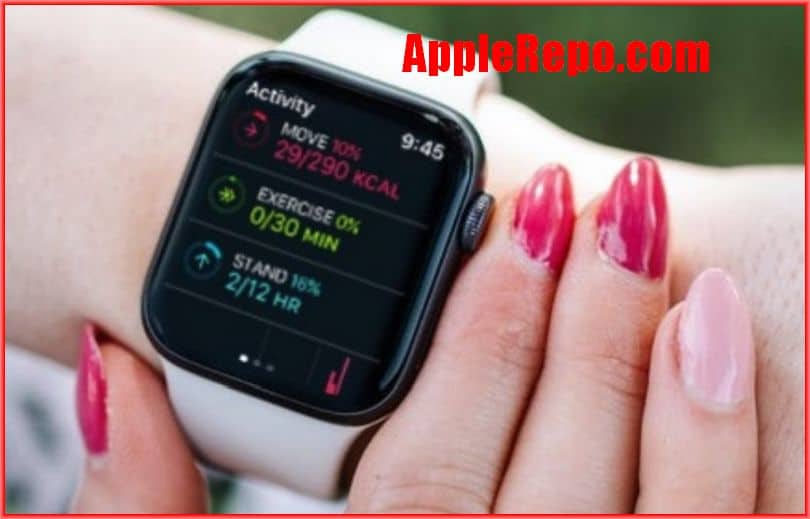How Does Apple Watch Calculate Calories Burned – Apple’s new Apple Watch Series 3 has a built-in heart rate monitor and is capable of tracking the calories you burn. How does it calculate your calorie burn? We’ll take a look at how it works and what you need to know about the new feature. Calories burned are calculated based on your heart rate. Your resting heart rate is measured when you first start wearing the Apple Watch.
The watch uses a heart rate monitor to estimate how many calories were burned during a particular activity in a day. It also takes into account your age, weight, height, and activity level. The watch also calculates the amount of time spent on an activity and the intensity level of that activity.
It’s typically around 60 to 100 beats per minute (bpm). The Apple Watch can measure your heart rate up to 40 times per second, which is more than enough to accurately determine your calorie burn.
To get an accurate measurement, you should keep your Apple Watch still for a few minutes before starting your workout. During your workout, the Apple Watch will measure your heart rate every 1 to 2 seconds.
Read: How to Turn Off Sound on Apple Watch
The Difference Between Total Calories versus Active Calories
Total Calories is the sum of Active Calories and BMR. These two numbers represent the amount of energy expended by a person in a day.
Active Calories are the number of calories that are used in physical activity. This includes calories burned while using muscles, moving around, and breathing.
BMR (Basal Metabolic Rate) is the number of calories that are burned without being involved in physical activity. BMR track the number of calculate calories burned at rest. This includes things like digestion and breathing, as well as muscle activity.
Are Apple Watch Calories Accurate?
Apple Watch users have long been curious about its calorie count accuracy. The device was advertised as helping people lose weight, but many users are unsure if the numbers are accurate.
Some have argued that the calorie count is inaccurate because it does not take into account activity levels; others say that specific foods and drinks – like coffee – can add up. Regardless of whether or not the calorie count is accurate, many people are still using the watch to track their diets.
In 2018, Apple released an update to the watchOS, which allowed users to view calories burned in real-time. It also made a few other changes to help people understand their daily calorie intake.
Apple Watch users can now see the calorie burn in real-time, which means they can get a more accurate idea of how many calories they are burning. The new feature is called “Activity” and it appears next to the watch face whenever you are active. The Apple Watch will estimate the number of calories you have burned for the day, as well as the number you have burned that day.
If you are standing up, the watch will count the calories you have burned for the day. When you are sitting down, the watch will count the number of calories you have burned throughout the day. If you are sleeping, the watch will count the number of calories you have burned during the night.
Improve Your Apple Watch Calories Burned Accuracy
Keep your personal information up-to-date
Apple Watch users have long complained that the device’s caloric burn estimate is inaccurate. A new study published in the Journal of Human Kinetics suggests that this inaccuracy may be due to inaccurate personal information kept by users. According to the study, if users updated their height, weight, gender and age information on their Apple Watch devices, the calorie burn estimate would be more accurate.
When it comes to the accuracy of your Apple Watch, a number of factors can impact its ability to give you a reasonably good estimation of how many calories you burned. For instance, your weight, height and gender are all factors that could impact this estimation. The more accurate the information is, the more accurate the calories burned estimate will be.
To to update your apple watch information, such as weight, height, gender, and age,
- update your device and open the Apple Watch app.
- Tap the My Watch tab.
- Then, tap Health > Health Profile.
- From there, tap Edit and then choose the item you want to change.
Ensure that Wrist Detection is enabled
If you are looking to track your fitness progress or just want to keep an eye on your heart rate, be sure to turn on wrist detection on your apple watch. With this feature enabled, the watch will track your resting and walking rates. Additionally, if you have a heart monitor that is compatible with the apple watch, it can also track your heart rate while you are exercising.
If you’re looking to turn wrist detection on or off on your Apple Watch. To do this,
- Open the Apple Watch app on your iphone
- Go to My Watch tab.
- Next, under Passcode, make sure Wrist Detection is turned on.
- Finally, check to see if the watch is detecting your movements by looking for a green check mark next to Wrist Detection.
Get the Most Accurate Heart Rate Reading
Tracking your heart rate while you exercise to better determine the amount of calories you burn will be possible with the Apple Watch. If your arm is moving, the monitor tries to measure your heart rate, but doesn’t record it. Your Health app shows different intervals of readings, but doesn’t reflect a reading at every 10 minutes.
Looking to get the most accurate heart rate measurement during your workout? The Apple Watch fits snugly on top of your wrist, and the heart rate sensor should stay close to your skin for the best results. With a quick glance at your watch, you can see how active you are and adjust your workout accordingly.
If you’re looking to track your progress with the Workout app (you need to have Apple Watch Series 3 or later), you’ll want to set up your Cardio Fitness Levels. This will help you measure how hard your heart is working during an outdoor walk, run or hike. You can find out how many calories you’re burning, as well as how many steps you’ve taken.
Power Saving Mode is a feature on the Apple Watch that allows you to conserve battery life. When you are working out and your heart rate is elevated, Power Saving Mode will turn off your screen and stop tracking your workout.
It’s important to know if Power Saving Mode is turned on or off so you can make the most of your battery life. If you’re not sure, open Settings on your watch and look for a switch called ‘Power Saving Mode’.
Improve Accuracy by Calibrating Apple Watch
If you’re like most people, you probably wear your Apple Watch to track your fitness progress and monitor your daily routine. But did you know that the apple watch calories burned accuracy can be improved by calibrating it? Calibrating your watch will improve the accuracy of distance, pace, calorie and fitness level measurements.
To calibrate your apple watch, follow these steps:
- Open the Watch app on your iPhone or iPad.
- Select Settings, then General, then About.
- Tap on the “Calibrate” button.
- Make sure your Apple Watch is set to the correct time zone.
- Tap on “Calibrate.”
- The Watch will calibrate itself in 30 to 60 minutes.
- You’ll see a progress bar while the calibration process takes place.
- Your Watch will notify you when the calibration is complete.
- When you’re done calibrating, Tap on “Done.”
- The watch will restart automatically.
- You can now continue to use your Apple Watch.
Affecting the heart rate sensor reading on the Apple Watch can be caused by a variety of things. One common culprit is tattoos, as they can cause ink to accumulate on the skin and interfere with the sensor’s readings. Additionally, rhythmic movements like running or cycling can create variations in surface blood flow, which impacts accuracy. Tennis and boxing also involve irregularity in movement, which can affect the heart rate sensor reading.
In conclusion, the Apple Watch is a great way to track calories burned, but it is not always 100% accurate. It is important to keep in mind that the watch may not be able to take into account all of the factors that contribute to how many calories are burned. Nevertheless, the watch is still a great way to get an estimate of how many calories have been burned and to help keep track of progress.


